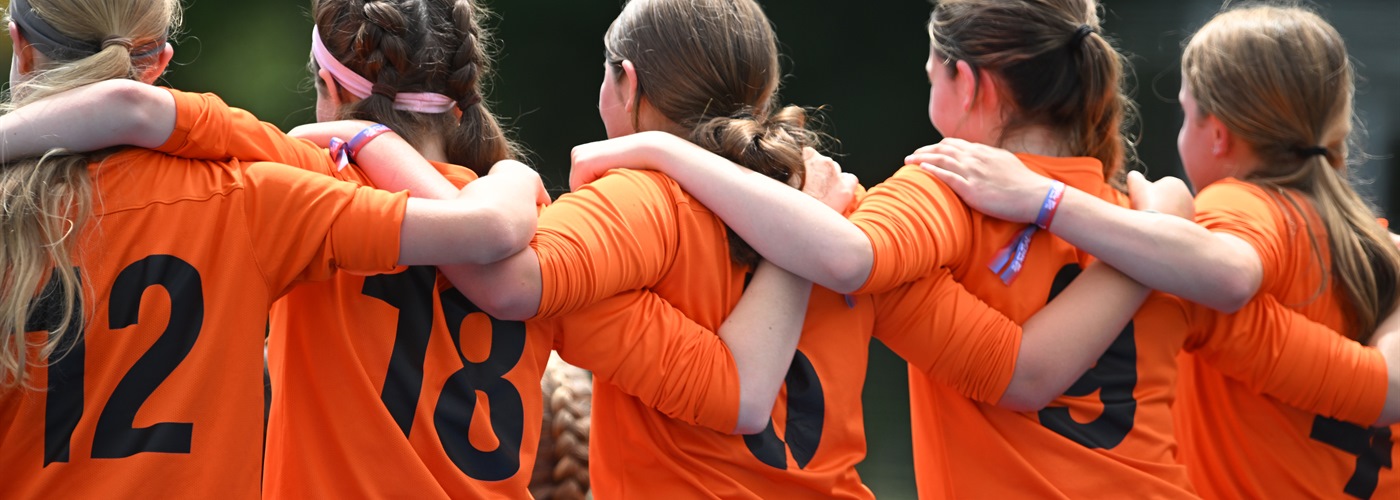Since the changes to youth football in 2012, the benefits for young players have been profound. Now, it’s time to shape the experience for the next generation.
In this blog, Game Insights analyst James Cook provides an overview of the upcoming game format changes, looks into the data behind the returns in each format, and offers coaching considerations to maximise your players’ development.
Overview of the upcoming game format changes
The upcoming changes, starting from the 2026-27 season, will maximise players’ experience of the game. The key headline changes are introducing the 3v3 game format, maintaining smaller formats at older age groups, and evolving the laws of the game. No matter how the game looks, the true spirit of football is about two teams playing fairly, learning together, and enjoying the game.
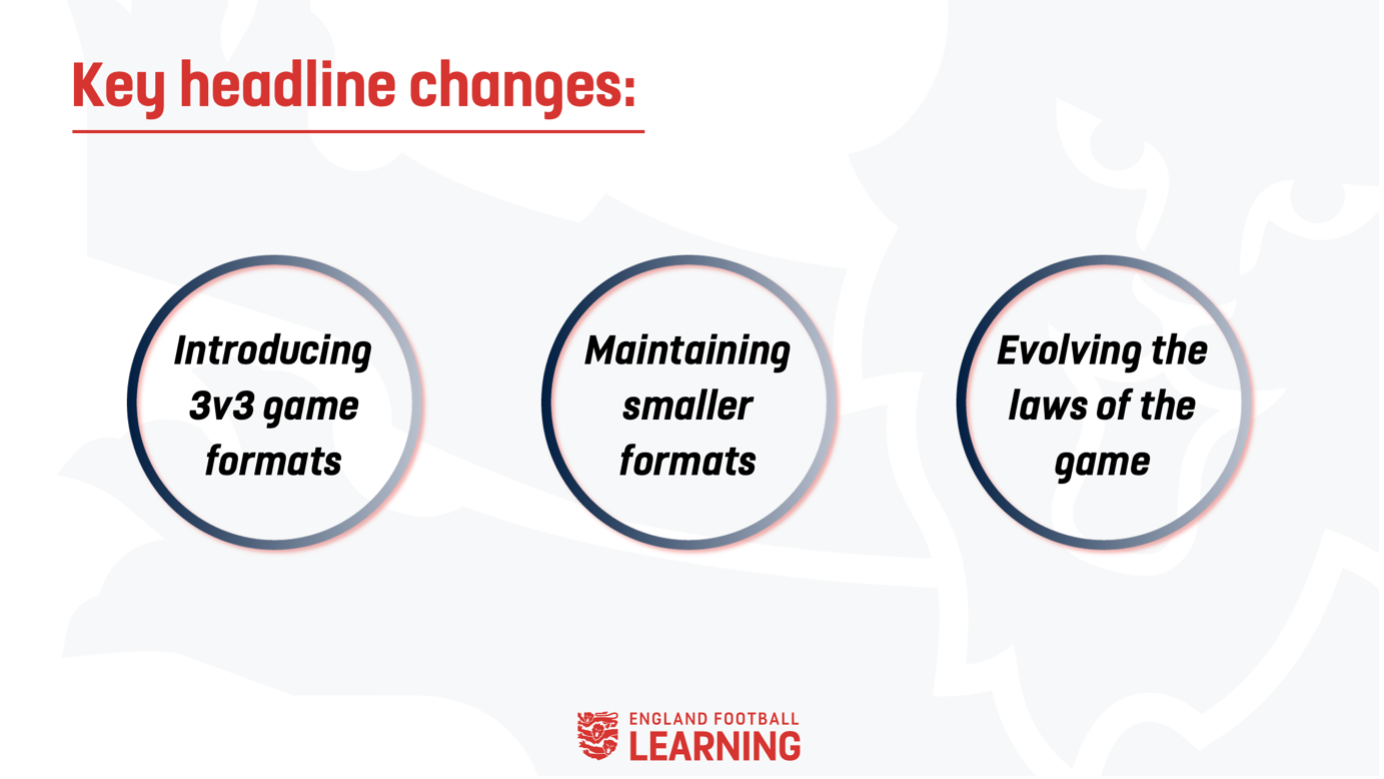
Why are these changes coming?
There are so many benefits to introducing the 3v3 game format. These include:
- Less space is needed for pitch dimensions of a 3v3 game, with pitches being 10m by 15m. This means you can fit four games of 3v3 on a 5v5-sized pitch, enabling more players to be on the pitch playing football.
- There are no goalkeepers, officials, or subs. This allows young players to have more opportunities to play, more chances to develop core skills, and the freedom to lead their own game under the supervision of one adult.
- Flexibility with the number of players. If the number of players is not divisible by 3, smaller games can be made, like 2v2 – or an overloaded 3v2 game could be used to create an exciting challenge.
Who will game format changes impact the most?
The changes commencing at the start of the 2026/27 season won’t affect the players as they transition through the age groups from this season to next. All players next season will play the same size game format as this season.
The changes will affect some youth football coaches.
If a coach working with U7, U9, U11, or U13 this season continues with the same age group, rather than move up with their current team, then next season they will be coaching in a smaller game format. See the image below for further information.
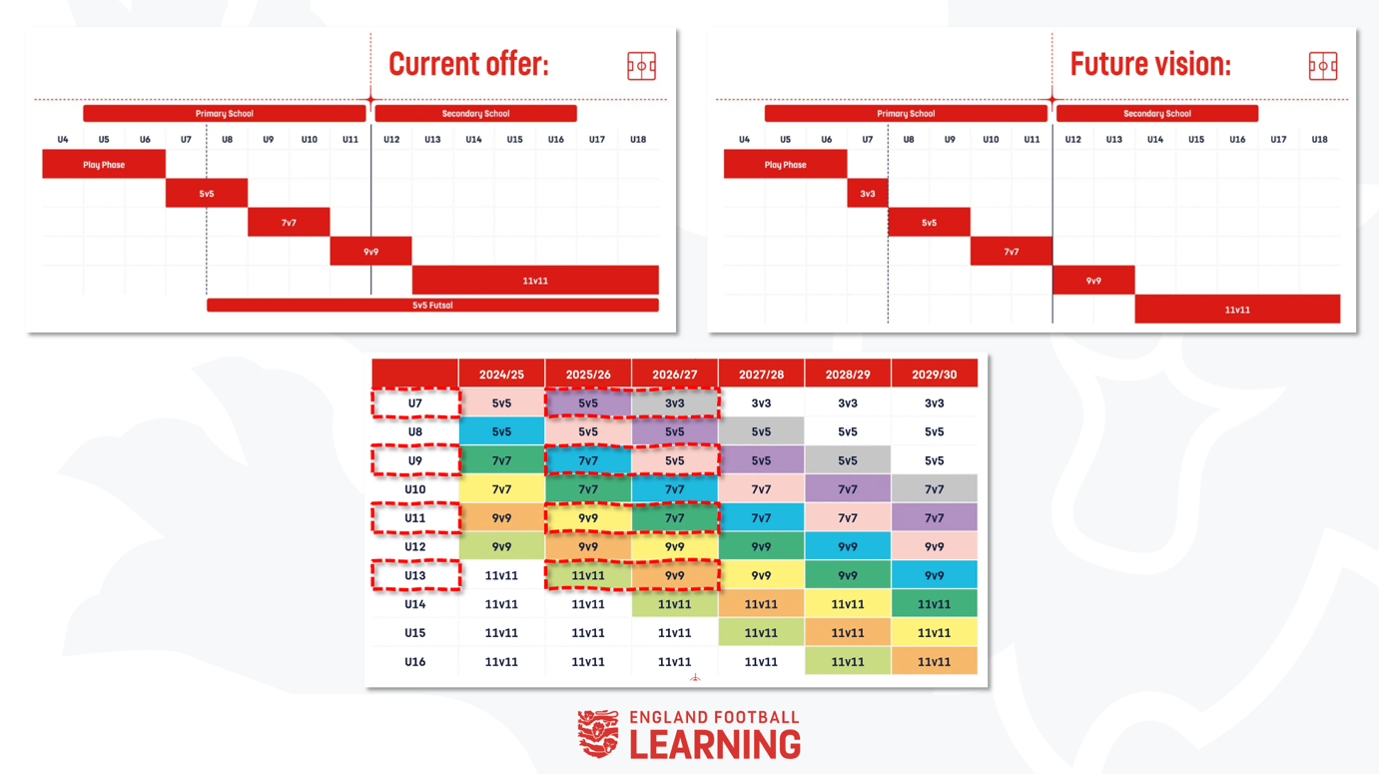
This image shows the current and future offer for game formats, which will commence in the 2026/27 season. Each colour on the table represents a team moving through the game formats season by season. The red dotted line specifically details which age groups will change to smaller game formats.
The 3v3 game format will be introduced at U7, instead of the current 5v5 format. It will give young players the best introduction to football and create more chances to learn, play, make decisions, score and stop goals. It’s a fun, fast, and forward-thinking game where every child plays.
What are the demands and returns of each game format?
Regardless of the environment and game format we coach in, it’s essential to develop and refine our players’ core skills. Mastering the fundamentals of the game allows players to succeed in multiple positions and different situations that the game presents. Repetition is a powerful tool used in training sessions. The more our players practise technical skills under game-realistic situations, the better it is for their development. Therefore, knowing which game formats produce more technical returns for the players is essential.
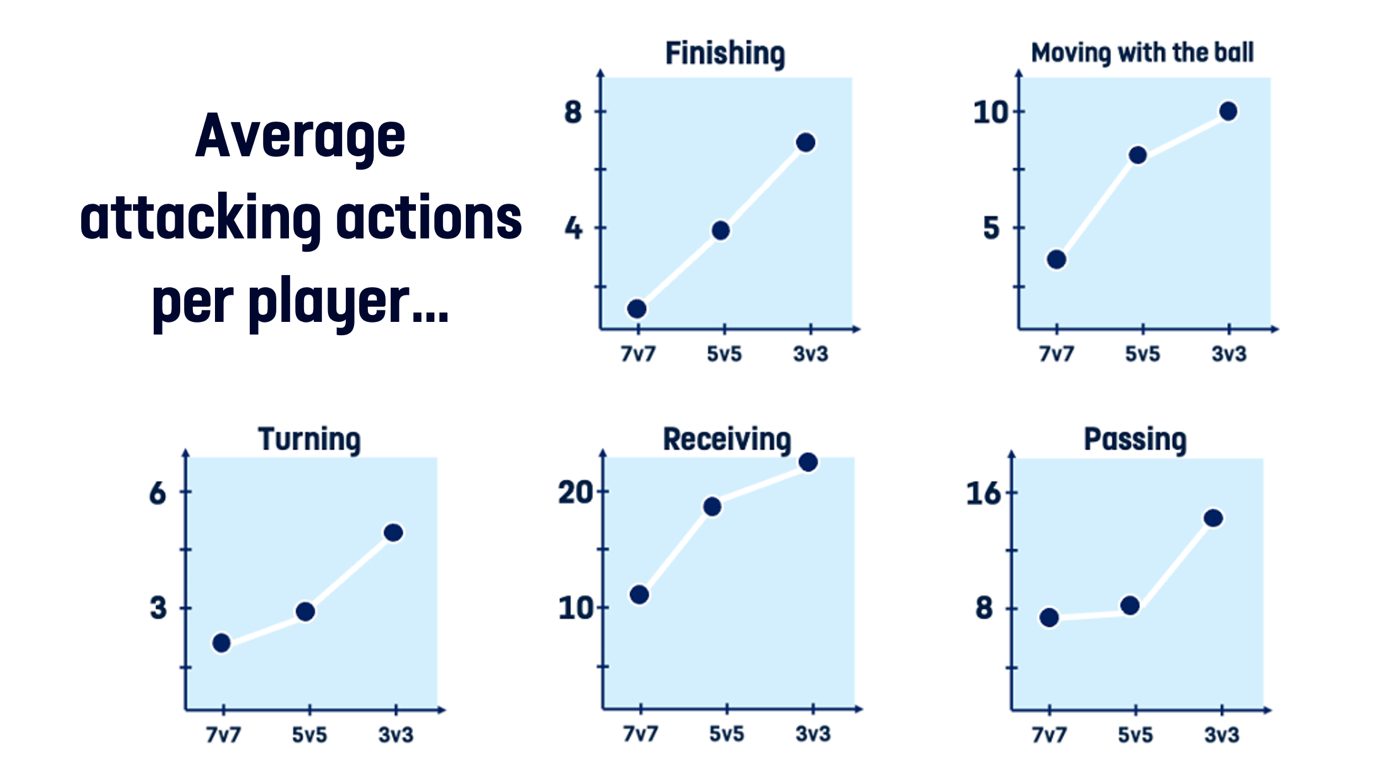
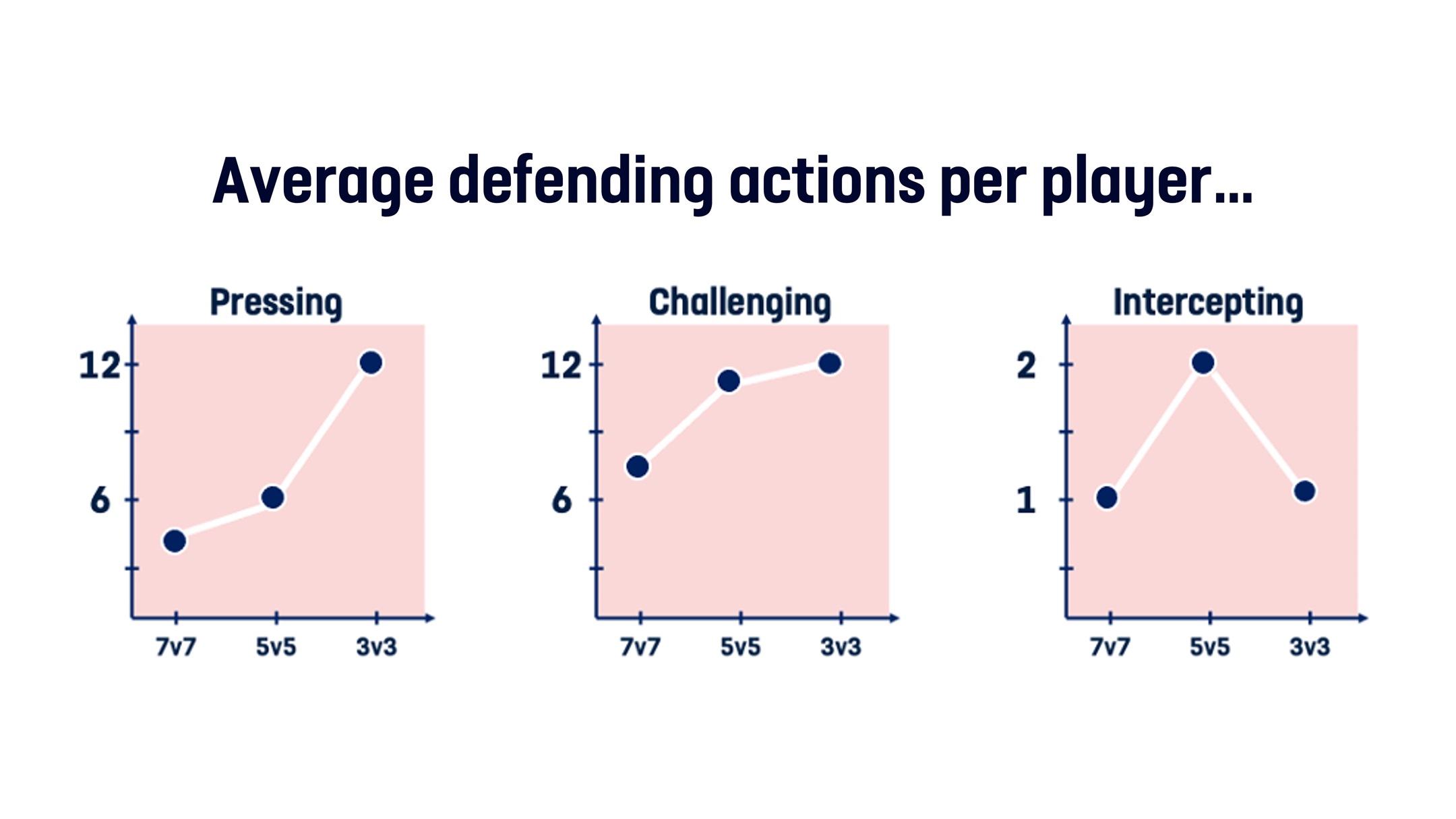
These graphs show the average number of attacking and defending core skills per player in 3v3, 5v5 and 7v7 game formats. This case study is of 10 minutes of ‘ball in play’
From this case study of 10 minutes of ‘ball in play’, we see an increase in the average number of core skills per player as the game format size decreases. For example, in a 7v7 game a player makes 8 passes, whereas in 3v3 they make 15 passes.
One of the key headline changes is maintaining smaller game formats as players’ ages increase. This allows older players to have exposure to play football, where they can practice core skills with more repetition.
Key coaching considerations
- What impact will the format changes have on my players’ holistic development?
- What are the positional demands as players go through the game formats?
- How might my support for each player need to differ to maximise their individual development?
- What potential challenges might I encounter when developing players in each game format? How can I address these proactively?
More information on the introduction of 3v3 game formats, maintaining smaller formats, and evolved laws of the game can be found on the FutureFit hub.


